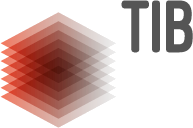An Examination on the Effects of Architecture Competitions in the Production Practice of Courthouses in Turkey and the World in the Period After 2000
Adliye Binalarının Üretim Pratiğinde Mimarlık Yarışmaları
DOI:
https://doi.org/10.59215/tasarimkuram.2023.372Keywords:
Architecture competitions, courthouses, post-2000 period, examples from Turkey, examples form international platformAbstract
There is a long-term existence of competitions in the field of architecture on the international platform. The architectural competitions have contributed to qualified production of buildings in varied typologies as well as contributed to the production of courthoses. Although it is possible to trace architectural competitions in the production practice of courthouse typology in Turkey until the 2000s, a paradigm shift has taken place in the production mechanisms and architecture competitions in the production of courthouses has remained in the minority in post-2000’s. The abandonment of competition phenomenon showes parallelism with the formal transformation in courthouses such as monotyped formal features. In the post-2000 period; the production of the courthouses which are shaped by the intense use of architectural elements with historical references that clearly reflect the ideology and the discourse of the government and whose relations with city and public space are disputed through border elements predominates in Turkey. However, the architecture competitions in the production process of courthouse typology is a continuous phenomenon on the international platform. The aim of the article is to compare courthouses which gained dominance in Turkey during the post-2000 period with the abandomnet of architecture competitions as participatory and pluristic production methods and have mostly similar formal features with their contemporaries produced through architecture competitions on international platform through schema, urban and imagery decisions; to find out the similarities, differences and the prominent design parameters in the design of courthouses for both sample groups; to examine the role of architectural competitions in the context of the courthouse examples. The method of the study consist of qualitative data analysis over schema decisions, urban decisions, imagery decisions of courthouses in Turkey and on the international platform after 2000’s.While the case group focuses on Turkey consists from Hopa Palace of Justice, Çubuk Courthose, Manisa Palace of Justice, Antalya Courthouse, Kadirli Palace of Justice, Samsun Regional Court oj Justice, Erdemli Courthouse, Anadaolu Palace of Justice; the other case group focuses on the courthouses produced by architecture competitons on the international platform consists from Courthouse of Alcalá de Henares, Montmorency Regional Court and Industrial Tribunal, Palace of Justice Béziers, Frederiksberg Courthouse, Regional Court Building in Siedlce, Palace of Justice Caen, Supreme Court of Netherlands, The City of Justice Jaén, Nürnberg Criminal Court, New Amsterdam Courthouse.These example groups were evaluated by creating tables contain three main chapters as schematic decisions (typology), urban decisions (context, usage of border element, publicness, accessibility parameters) and imagery decisions (historical referances, monumentality, gabarite, usage of rational form, symmetry, transparency parameters). In the tables, while the existed features were painted green, non-existed features were painted red to make tables clearer. In the context of schema decisions these two example groups are similar with central, lineer, clustered, courtyard plan typologies. It is possible to correlate this similarity to necessity of the function. In the context of urban and imagery decisions these example groups have different design parameters. While the parameters of publicity and accessibility cannot be reflected in the building scale in Turkey because of the predomination of border elements. In the courthouses produced by architecture competitions on international platform are not seperated from publicplace by any border element so publicity and accessibility gain reality at the building scale.
In the context of imaginative decisions, while the historical references and concern of monumentality, usage of rational form and monumentality are emphasized in the examples in Turkey, transparency is not often positioned as a preferred design parameter. The monumentality parameter in the courthouse examples on the international platform is handled together with the usage of rational form. Also transparency is a forefront design parameter on international platform. All design parameters used in design are embodied with different formal features in architectural competitions with their structure that makes diversity possible.Despite the existence of common design parameters such as publicity, accessibility, monumentality, and transparency, similar formal features do not dominate the buildings, unlike courthouses with similar formal features in Turkey. These design parameters, which come to the fore in the production of courthouses on the international platform, are embodied with different formal features in architectural competitions with their structure that makes diversity possible; Thanks to the democratic and pluralistic production ground provided by architectural competitions, the production of courthouse buildings with original and various formal constructs takes place. Architecture competitions with their democratic structure contributes to the improvement of the diversity. The study is a contribution to the discussion of the development of the countries’ architecture depending on the methods of obtaining the architectural works produced by public hand.




















